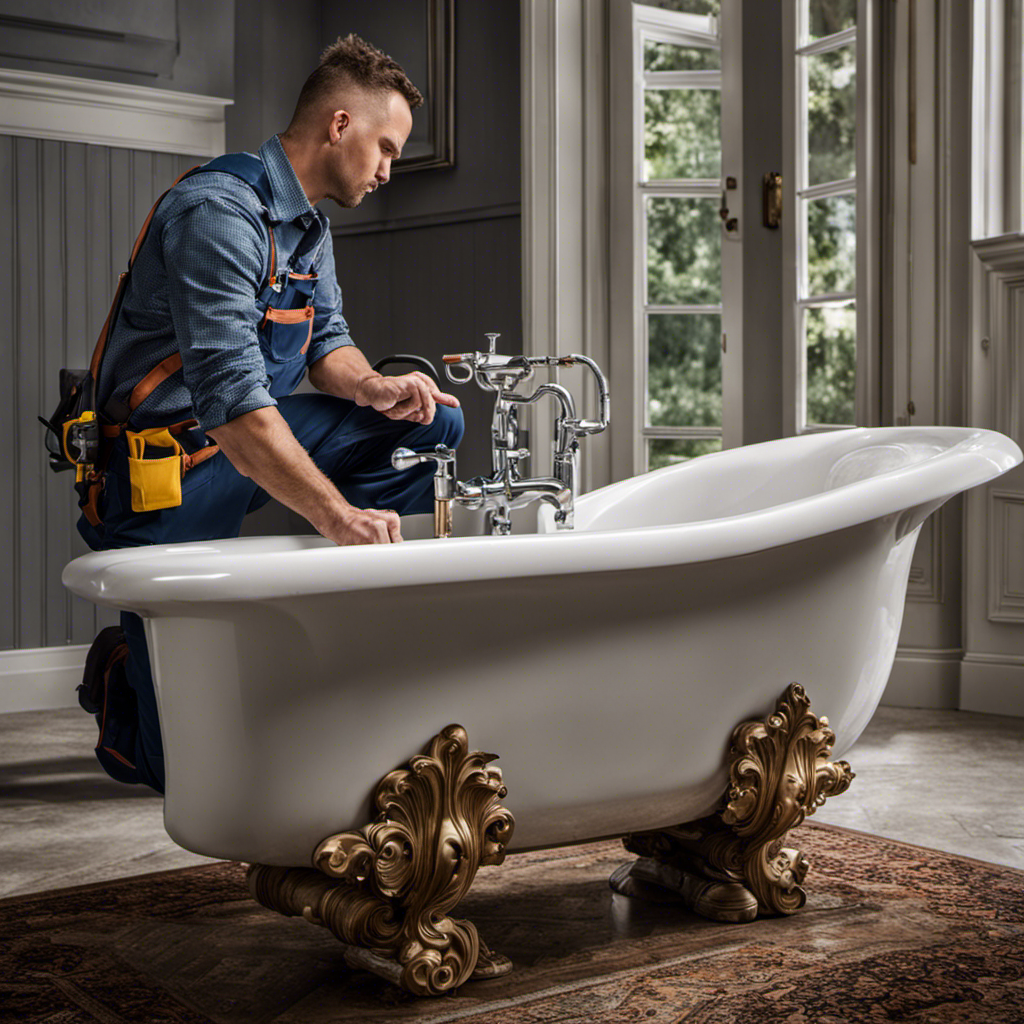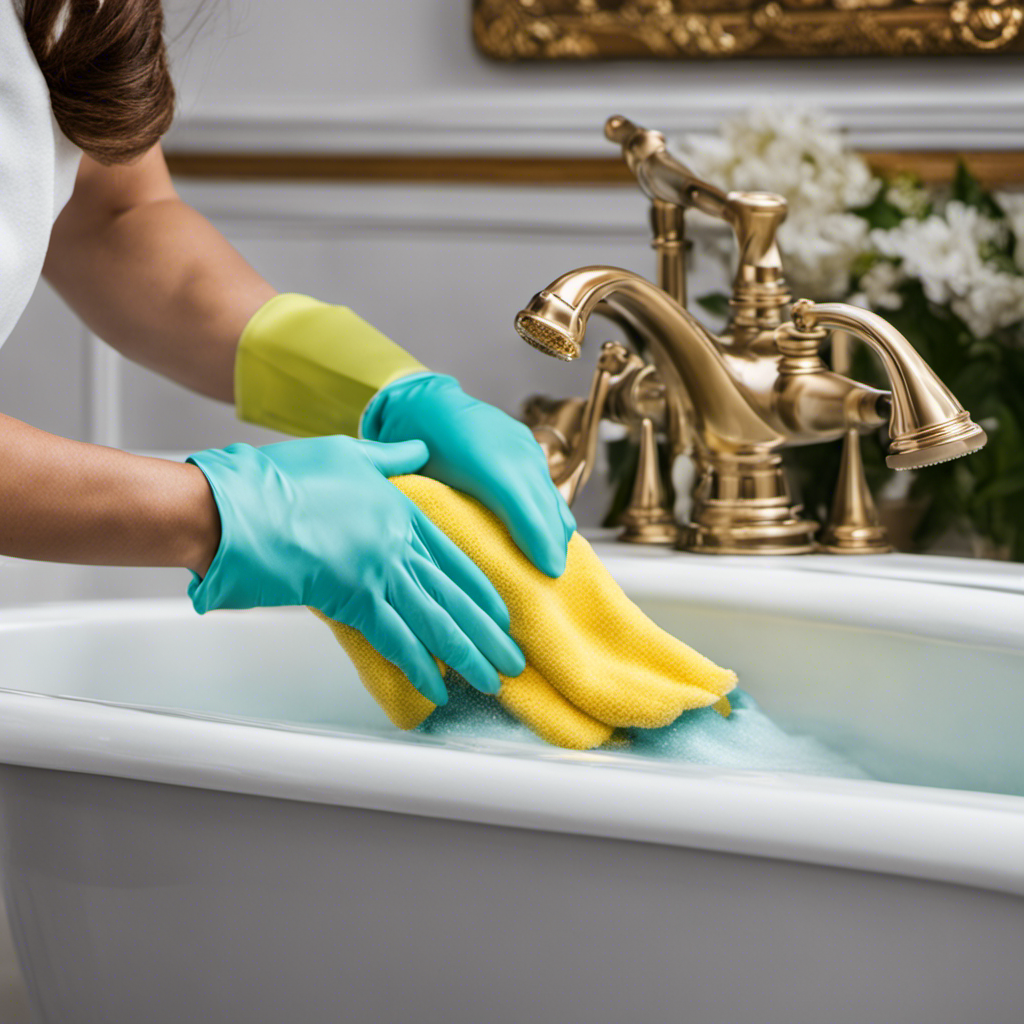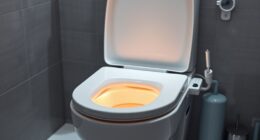I’m here to tell you that finding a leaking bathtub can be a real nightmare. It can cause serious damage to your home and lead to costly repairs. But fear not, because I’ve got you covered.
In this article, I’ll show you the signs to look out for, how to check for water damage, and the steps to fix a leaking bathtub.
So, let’s dive in and put an end to that pesky bathtub leak once and for all.
Key Takeaways
- Look for signs of a leaking bathtub such as water stains, discoloration, mold growth, decreased water pressure, and increased water bill.
- Check for water damage by examining the walls and floor for discoloration, soft spots, mold growth, and musty odors.
- Test for leaks by checking connections between the bathtub and pipes, running water and observing for drips or leaks, and inspecting the caulking around the edges of the bathtub.
- Identify common leak sources such as connections between pipes and the bathtub, water stains or discoloration on ceilings or walls below the bathroom, musty odors, and soft or sagging spots on the floor.
Signs of a Leaking Bathtub
You need to look out for signs like water stains or puddles on the floor to determine if your bathtub is leaking. The causes of bathtub leaks can vary, but some common culprits include worn-out seals, cracked pipes, or faulty plumbing fixtures.
When inspecting for signs of water damage, pay attention to any discoloration or warping of the walls or floors near the bathtub. Mold or mildew growth can also indicate a leak. Additionally, if you notice a decrease in water pressure or a sudden increase in your water bill, it could be a sign of a hidden leak.
Regularly checking for these signs and addressing any leaks promptly can help prevent further damage and costly repairs.
Checking for Water Damage
To check for water damage, you’ll want to examine the surrounding walls and floor for any signs of discoloration or soft spots. This can indicate a leaking bathtub or plumbing issue. Additionally, checking for mold growth is crucial as excess moisture can lead to mold growth, which can be harmful to your health. Mold thrives in damp environments, so if you notice any musty odors or see any black or green spots, it’s important to address the issue promptly. Another factor to consider is determining water pressure. Low water pressure may suggest a leak in the plumbing system, while high water pressure can put strain on the bathtub and contribute to leaks. By thoroughly inspecting for these signs, you can identify any water damage and take appropriate action to prevent further issues.
| Signs of Water Damage | Indications of Mold Growth |
|---|---|
| Discoloration | Musty Odors |
| Soft Spots | Black or Green Spots |
| Musty Odors | |
Testing for Leaks
When inspecting for water damage, it is important to thoroughly test for leaks in the plumbing system. Testing for leaks is an essential part of bathtub maintenance and plays a crucial role in preventing future leaks.
To begin, check the connections between the bathtub and the pipes. Look for any signs of water seepage or dampness around these areas.
Next, run water in the bathtub and carefully observe for any drips or leaks. Pay close attention to the faucet, handles, and drain.
Additionally, inspect the caulking around the edges of the bathtub to ensure it is intact and free from cracks.
By thoroughly testing for leaks and addressing any issues promptly, you can prevent further damage and costly repairs.
Moving forward, let’s now explore identifying common leak sources.
Identifying Common Leak Sources
One common leak source in the plumbing system is the connections between the pipes and the bathtub. Identifying bathtub leaks can be challenging, but there are certain signs of water leakage that can help pinpoint the problem. These signs include water stains or discoloration on the ceiling or walls below the bathroom, musty odors, or soft or sagging spots on the floor. By paying attention to these signs, you can identify potential leak sources and take appropriate action to fix them.
To make the identification process easier, here is a table showcasing the common signs of water leakage and their corresponding leak sources:
| Signs of Water Leakage | Possible Leak Source |
|---|---|
| Water stains or discoloration on ceiling or walls below bathroom | Leaking pipes or faulty bathtub seal |
| Musty odors | Mold or mildew growth due to water leakage |
| Soft or sagging spots on the floor | Water damage from bathtub leak |
Steps to Fix a Leaking Bathtub
You can easily fix a bathtub leak by following these steps.
First, identify the source of the leak. Check for cracks or gaps in the bathtub sealant around the edges of the tub. If you find any, remove the old sealant with a putty knife and clean the area thoroughly.
Next, apply a new layer of bathtub sealant, making sure to cover the entire gap or crack. Smooth out the sealant with your finger or a caulk tool for a neat finish. Allow the sealant to dry completely before using the bathtub.
If you are unsure or uncomfortable with the process, it is recommended to hire a professional plumber to fix the leak for you. They have the expertise and tools to ensure a proper and long-lasting repair.
Conclusion
In conclusion, discovering a leaking bathtub is like uncovering a hidden treasure chest in your home. It may seem daunting at first, but armed with the knowledge of signs to look for, checking for water damage, and testing for leaks, you can become a master detective in finding the source.
With the steps provided to fix the leak, you’ll be able to restore your bathtub to its former glory and prevent further water damage. So grab your tools and embark on this adventure, for a dry and serene bathing experience awaits!










